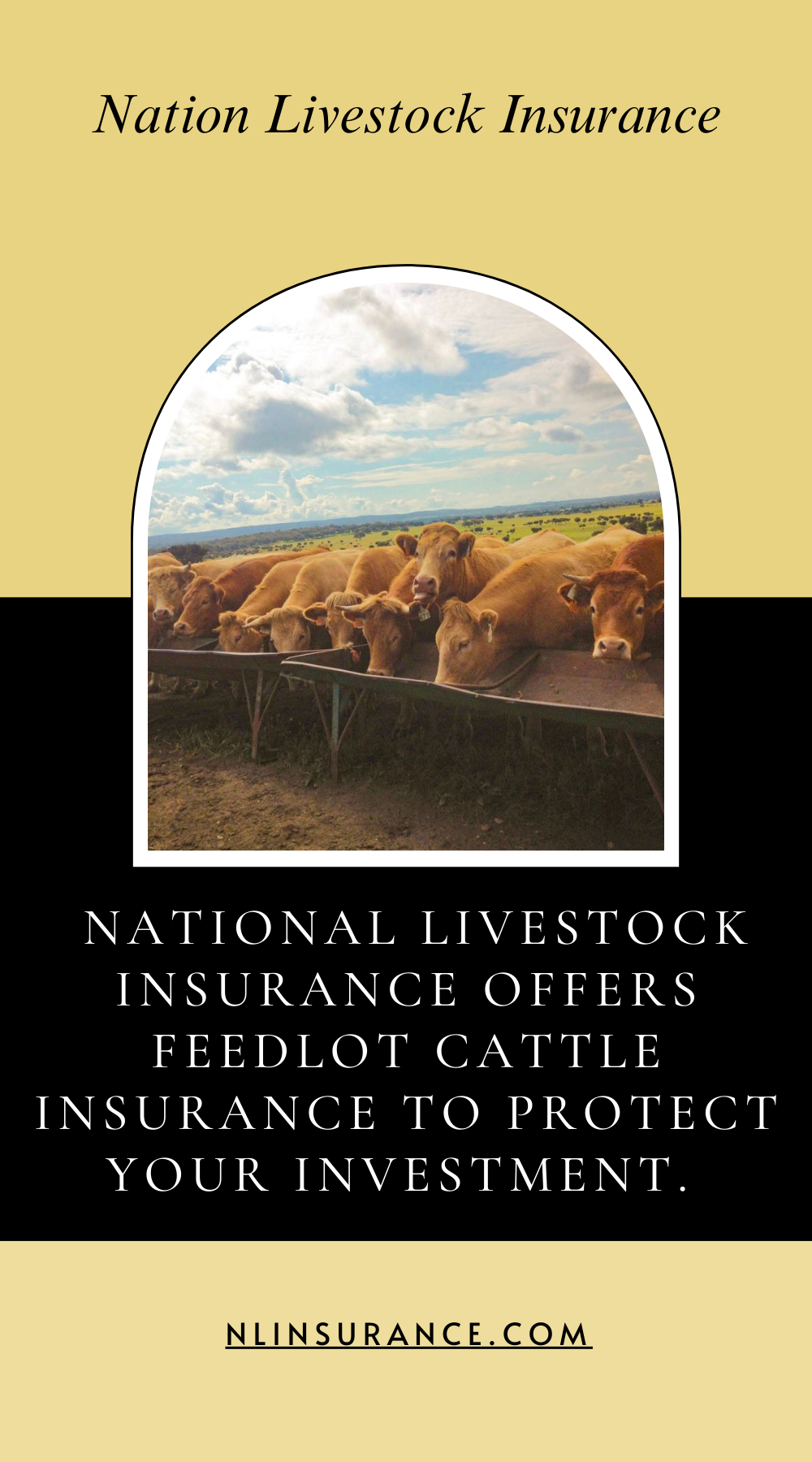Dalhart, Texas, sits at the very edge of the Texas Panhandle, nestled in those wide-open plains where feedlots like XIT (75,000-head) and Friona (105,000-head) dominate the horizon. Here, feeding cattle isn’t just a business, but it’s a way of life shaped by the land and weather. That’s why Feedlot Cattle Insurance from National Livestock Insurance is built for your reality: it covers cattle death, not vet bills, based on your valuation schedule. Beyond that, optional protection against hypothermia, carcass removal, and contaminated feed or water helps manage real-world threats.
This insurance is mortality-focused. It pays when cattle die from certain events. Covered causes include fire, lightning, windstorm, flood, drowning, building collapse, theft, vandalism, and blizzard-related smothering. Optional riders add coverage for hypothermia, carcass removal, and contaminated feed or water. You won’t get paid for vet bills, medical treatments, or production losses. The goal is to make sure that when a herd member dies from covered perils, you get fair compensation based on the current market value.
Dalhart’s semi-arid climate brings hot summers, cold winters, sudden storms, and the occasional flash flood. Average July highs hover around 92°F, with winters dropping to the low 20s. That heat can exacerbate stress, and cold snaps bring logistical challenges overnight. Plus, storm systems complete with wind, lightning, or hail aren’t uncommon in spring and early summer. These extremes can crush pen structures, drench bedding, and cause dangerous feeding conditions. Our insurance steps in when the unthinkable happens.
In the heat of July and August, consistent triple-digit days can stress penned cattle, especially if shade or water is lacking. Then, spring and early summer storms may bring large hail, lightning strikes, or gusts that damage barns. A lightning bolt during a Midwest derecho once knocked out part of the feed-bay roofing in nearby Amarillo, causing cattle injuries that weren’t covered under vet insurance alone.
When flash floods come, low-lying pens flood fast, harming cattle before feedlot staff can act. We’ve seen similar floods across Potter and Dallam counties. The flooding coverage covers death by drowning in these events.
Come winter, blizzards threaten. Though snowfall averages under 15 inches, a single storm can bury pens. The term "smothering" describes cattle trapped in snow so deep that they suffocate. The “Big Die-Up” winters of the 1880s used to wipe out entire herds in much less fenced conditions. We’ve replicated that risk, only this time, coverage helps you pack your recovery gear after the first drift settles.

.png)
When barns collapse, be it from weather wear, heavy snow, or sudden wind, the cattle caught in falling debris may not survive. Similarly, feeder bay damage can crush or expose hot wiring, leading to deadly hazards. Losing stock to such events is covered under building collapse.
Lightning can strike unthinkably, burning barns, igniting hay, or electrocuting penned cattle. A well-maintained feedlot with lightning rods and ground wires can reduce risk, but sometimes lightning jolts cattle. If cattle are killed, coverage applies.
Theft and vandalism aren’t rare in remote yards. Dalhart-area pens have seen nighttime threats before. If fences are cut, cows roam off-site, and are stolen or killed, our theft and vandalism protection pays out.
Hypothermia is not always obvious, and Dalhart cold fronts move fast. A drop from 70°F to freezing within hours can snap a steer’s health. If it dies from hypothermia (verified by a vet), that’s covered, with the optional rider on board.
Feed storage tanks and water troughs sit out in the open. Rain or hail could contaminate feed or water. Contaminated feed or water coverage helps when cattle ingest toxins and die, even if the contamination happened downstream from your yard.
When a loss occurs, someone must clean up. Carcass removal coverage takes care of the disposal process, making sure you’re not left with the burden of hauling away dead cattle.
Insurance doesn’t replace good management, it complements it. You still maintain drainage, inspect pens, shade troughs, lightning-proof barns, and monitor weather alerts even after paying premiums. These actions reduce top-down risk and ensure insurance will work when needed.
Transporting cattle? Ventilation, rest stops, and secure trailers are critical. If death occurs during shipping, and due care was given, coverage may apply. But reckless transport can void claims.
We don’t just sell policies and forget you. Once you’re on board, we spring into action seasonally, running reminder checks before storm season and helping you update valuation schedules for changing cattle prices. If there’s a risk of contamination or weather extremes, we’re in your corner.
We're not just an insurer, we’re your partner. National Livestock Insurance in Amarillo knows your pens, your past risk, and your cattle. That local expertise combines with The Hartford’s A+ financial strength to make sure you're paid fast during a loss.
Feedlot life in Dalhart is hard work. Whether you manage 5,000 head or 75,000 like XIT, risks are real: heat, cold, storms, floods, theft, barns, and contaminated feed. Feedlot Cattle Insurance with National Livestock Insurance pays off when the unthinkable becomes reality.
Mortality coverage with a valuation schedule guarantees fair compensation. Optional riders for hypothermia, contamination, and carcass handling complete the package. Your diligence, drains, shade, fencing, and pen care support coverage keep claims smooth.
When cattle die, you need a response that matches your operation's momentum. With this insurance, you rebuild fast, keep making progress, and move forward. That’s not just protection, that’s resilience.
Call National Livestock Insurance today. Let’s walk your yard, assess threats, and build coverage that fits your needs. Because here on the Panhandle, cattle aren’t just inventory, they’re your livelihood, and we’ve got your back.